Our Breathable Hay Tarps are constructed with a proprietary European-engineered polypropylene fabric that is lightweight, water resistant, and nearly impossible to tear. Humidity easily passes through it, but rain just rolls right off, as long as your hay is stacked with a 45° slope. They are ideal for covering round hay bales, however square bales are also possible as long as you create a peak at the top of the haystack. These hay covers are significantly easier to install than conventional polyethylene tarps and will not billow in the wind due to their lightweight, breathable properties. Conventional tarps can weigh over 100 lb and require clunky and laborious tie-down methods, but these revolutionary hay tarps can be held in place just by tacking Hay Tarp Pins through the material into your hay.
When covering your haystack, be sure to stack with 45° slopes and keep the tarps TIGHT to ensure proper functionality. Examine and adjust periodically for tautness. It is also recommended to stack hay on top of some kind of base layer, such as stone or gravel or pallets, to keep bales away from direct ground contact in order to prevent absorption of ground moisture.
To determine the hay tarp size, refer to the hay tarp calculator in the attached images.
|
|
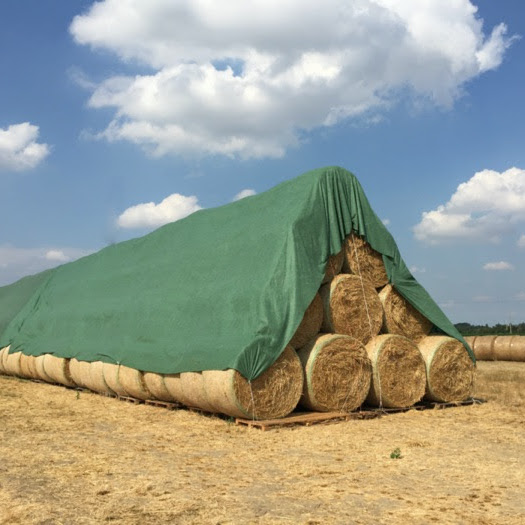
Breathable Hay Tarp Benefits:
- Wind blows through the tarp instead of billowing it out
- Water-resistant fabric causes droplets to roll off
- Humidity and moisture cannot get trapped in the hay
- Will not freeze or become brittle in low temps
- Lightweight fabric is easier to handle and install
- 3 Year Warranty
Protexia Hay Tarp Instructions:
1. Gather supplies, including tarp pins, hammer, base layer of rocks or pallets, and rope or straps to help drag out the tarp.
2. Determine stacking location. Plan to orient the stack North to South to limit direct sunlight to any exposed hay, and also bear in mind the direction of principle wind. Do not stack under trees or in a low spot where water gathers. When possible, elevate bales to avoid direct ground contact.
3. Stack the hay bales tightly together in a pyramid formation with 45-degree slopes.
4. Unfold your Protexia Hay Tarp completely in the area next to your hay stack so that it is parallel to the long side of the stack. Do not unfold on top of hay stack.
5. Cover your hay. Throw straps over the hay stack, fasten to the tarp, and use the straps to pull the tarp up and over the hay stack. Tarp has a yellow seam in the middle to help with centering.
6. Secure hay tarp. Tarp must be TIGHT, with no slack or low spots, so that water can run off. Starting from the center, use pins or other fasteners to secure tarp directly to the hay bales. Pin tarp to the bottom row of hay, using your foot or a partner to pull the tarp downwards while the pin is hammered in. Place pins evenly on both sides of the stack for best results.
7. Check tarp for tension 1-2 weeks after install, after extreme weather events, and periodically to ensure that settling of the hay does not result in slack in the tarp.
8. Store your tarp in a cool, dry place away from sun and pests.


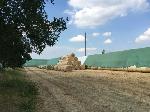
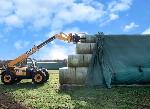
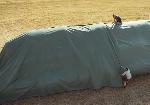
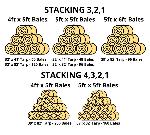
*Click on thumbnail for larger size.
|
|
|
|
|
Go Back
Please feel free to contact us with any
questions. Thank you!
|